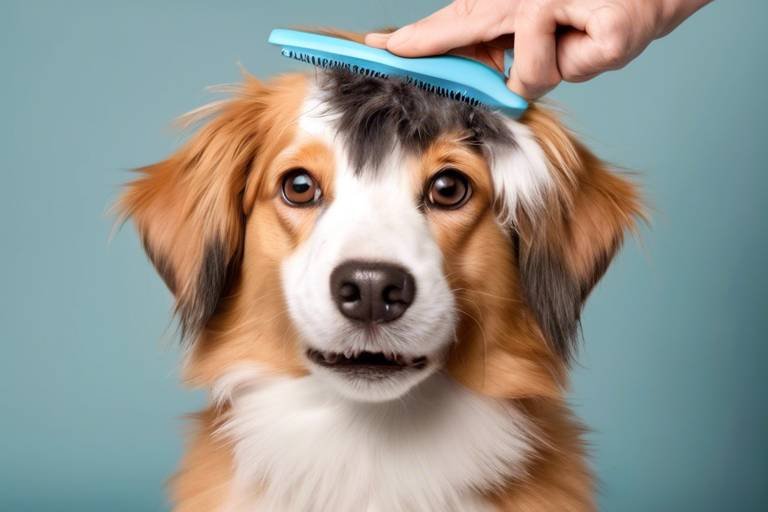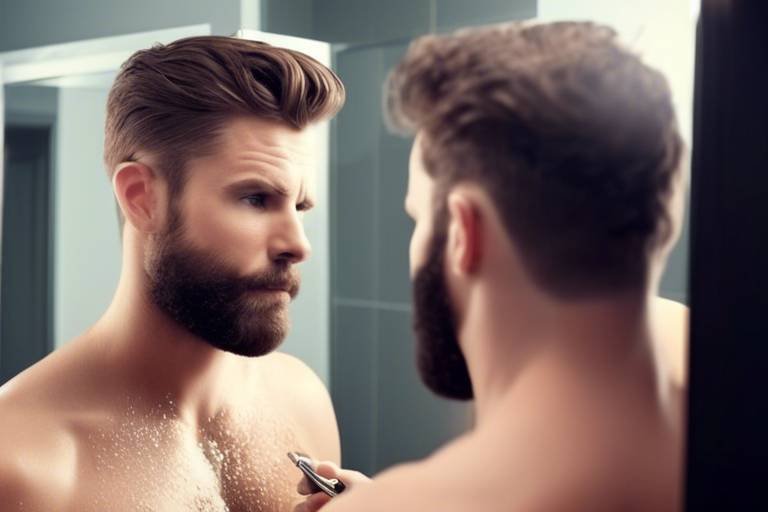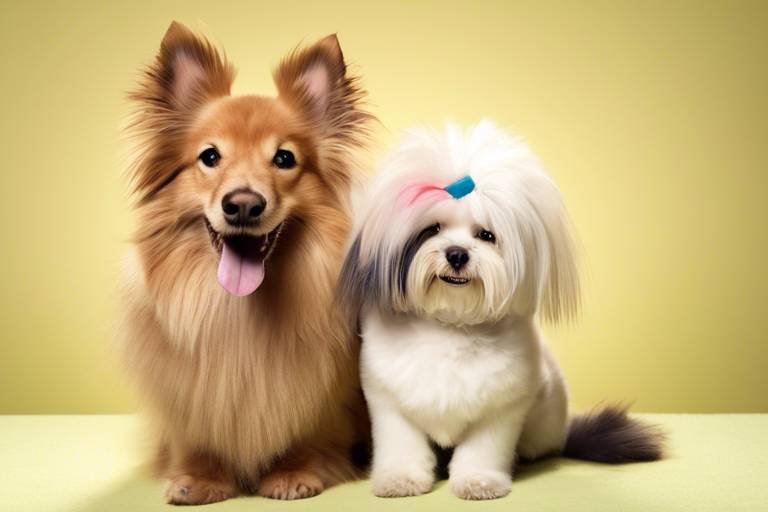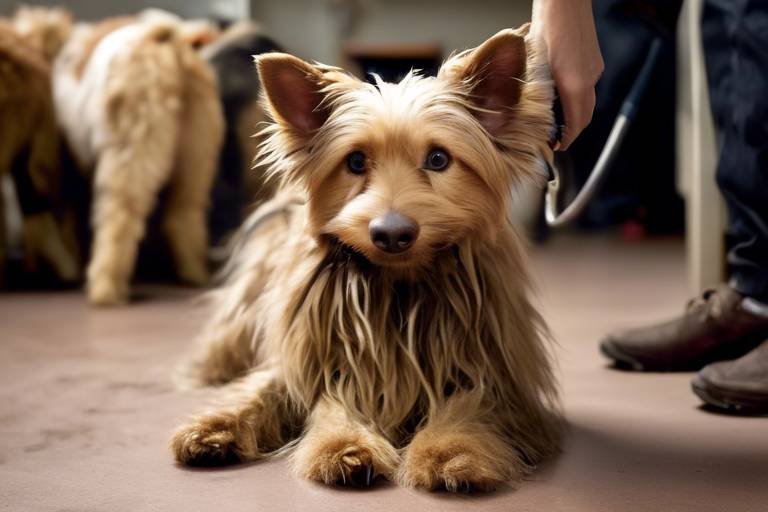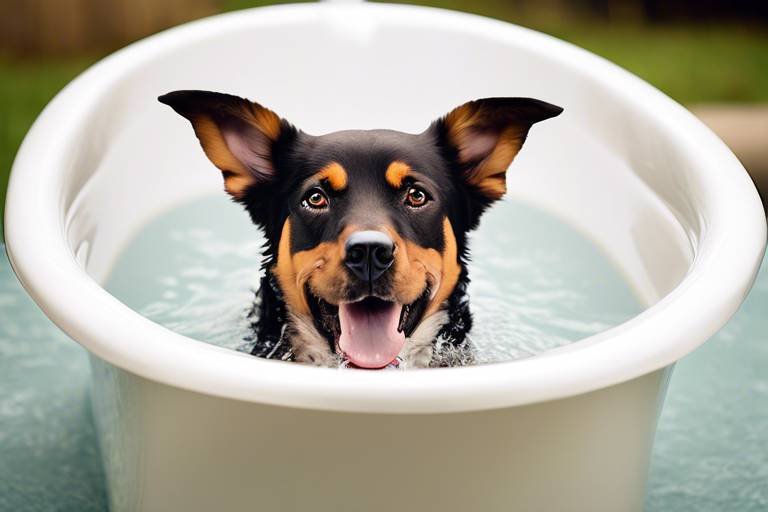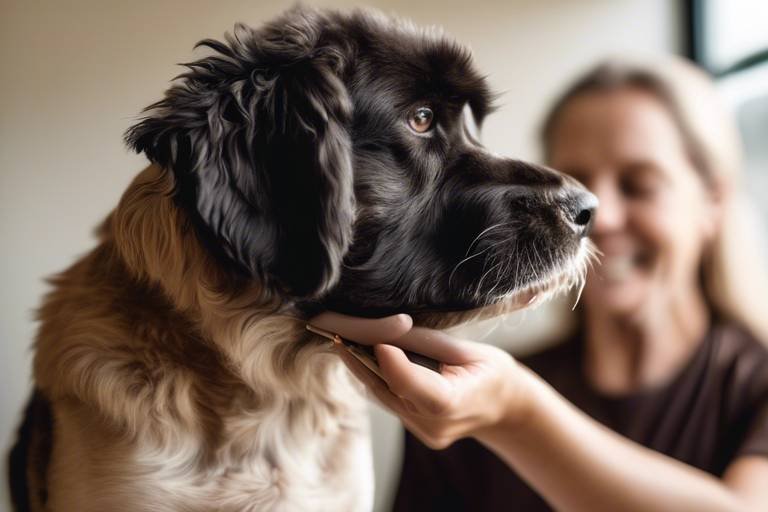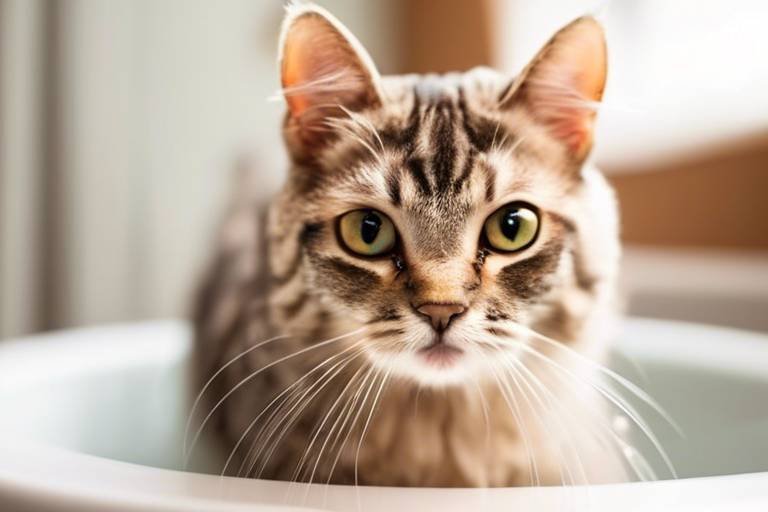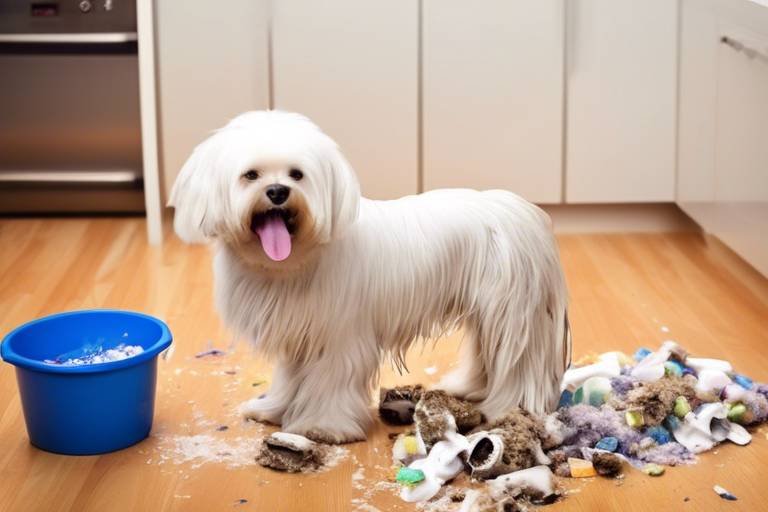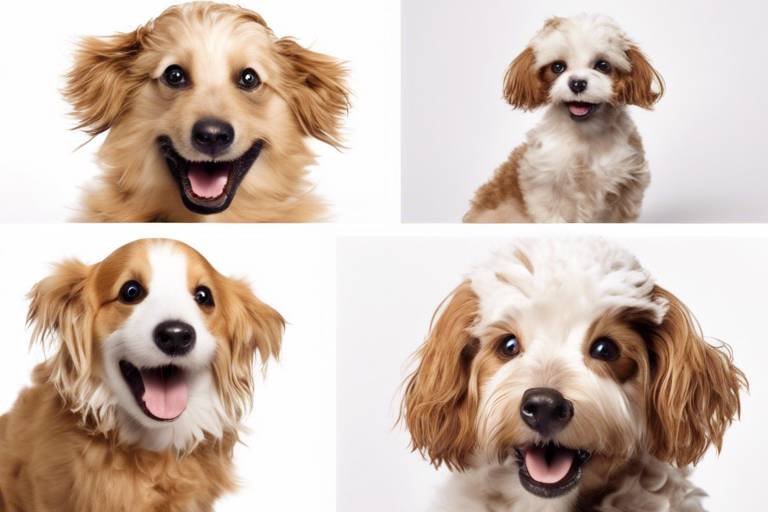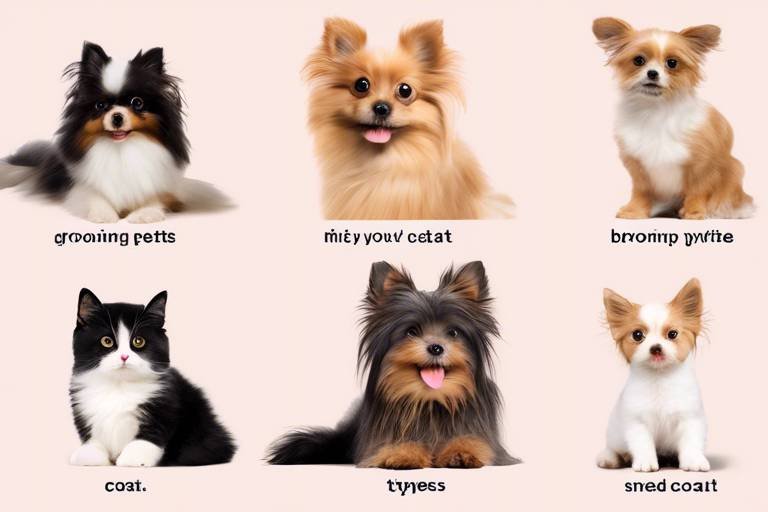How to Create a Positive Grooming Experience for Your Pet
Grooming your pet can be a delightful bonding experience, but it often comes with its fair share of challenges. Whether you have a fluffy dog that loves to roll in the mud or a sleek cat that sheds like there's no tomorrow, the key to a successful grooming session lies in your approach. In this article, we will explore effective strategies and tips to ensure that grooming your pet is a pleasant experience for both you and your furry friend. By understanding their needs, choosing the right tools, and creating a calm environment, you can transform grooming from a dreaded chore into a rewarding ritual.
Every pet has unique grooming requirements. Just like humans, pets have different hair types, skin sensitivities, and personalities that influence how they react to grooming. For instance, a long-haired breed like the Persian cat will require regular brushing to prevent matting, while a short-haired breed might need less frequent grooming. Understanding these needs helps tailor the grooming process, making it less stressful and more enjoyable for them. Take the time to observe your pet's behavior during grooming; do they enjoy being brushed, or do they squirm away? This insight will help you adjust your approach accordingly.
Selecting appropriate grooming tools is essential for a positive experience. The right brushes, clippers, and shampoos can significantly impact your pet's comfort during grooming. For example, a slicker brush works wonders for detangling long fur, while a rubber brush can be soothing for short-haired pets. Always opt for high-quality products that suit your pet's specific grooming needs. Investing in the right tools not only makes the process easier but also enhances your pet's overall grooming experience. Remember, a comfortable pet is a happy pet!
A serene environment can greatly enhance your pet’s grooming experience. Minimize distractions by turning off loud music or television, and choose a quiet space where your pet feels safe. Consider using calming scents, like lavender, to create a soothing atmosphere. You might also want to play soft music or use a white noise machine to drown out any sudden noises that could startle your pet. The goal is to create a peaceful sanctuary where your furry friend can relax and enjoy the grooming process.
Regular grooming routines can help pets become accustomed to the process. Just like brushing your teeth every day, grooming should be a consistent part of your pet's life. This consistency builds trust and reduces anxiety during grooming sessions. Start with short sessions that gradually increase in length as your pet becomes more comfortable. Over time, your pet will associate grooming with positive experiences, making the process smoother for both of you.
Using treats and praise during grooming can encourage good behavior. Positive reinforcement helps pets associate grooming with pleasant experiences. For instance, if your dog sits patiently while you brush, reward them with a treat or a favorite toy. This approach not only reinforces good behavior but also strengthens the bond between you and your pet. Remember, a little encouragement goes a long way in making grooming a positive experience!
Being aware of your pet’s stress signals is crucial. Pets communicate their discomfort in various ways, such as panting, whining, or trying to escape. Recognizing these signs allows you to adjust grooming techniques to ensure a more positive experience. If your pet seems anxious, take a break, offer some comfort, or try a different grooming method. Always prioritize your pet's well-being, as a relaxed pet will make the grooming process much more enjoyable.
Different breeds have varying grooming needs. Understanding these differences helps in selecting the right approach for each type of pet. For example, breeds like Golden Retrievers require regular brushing to manage their thick fur, while Beagles may only need occasional grooming. Additionally, some breeds may benefit from professional grooming services, especially those with specific styling needs. Researching your pet's breed and its grooming requirements can lead to a more effective grooming routine.
Sometimes, professional groomers are necessary for specific needs. Knowing when to consult a professional can ensure your pet receives the best care. If your pet has matted fur, skin issues, or if you're unsure about how to groom specific areas, don't hesitate to reach out to a professional. They have the expertise and tools to handle even the most challenging grooming tasks, ensuring your pet looks and feels their best.
Regular maintenance between grooming sessions can help keep your pet comfortable. Simple practices like brushing your pet at home can prevent mats and tangles, making the next grooming session easier. Additionally, keeping your pet's nails trimmed and ears clean can contribute to their overall health and comfort. A little effort each day can make a big difference in your pet's grooming experience!
- How often should I groom my pet? The frequency depends on your pet's breed and coat type. Long-haired breeds may need grooming several times a week, while short-haired breeds could be groomed once a month.
- What tools do I need for grooming? Essential tools include brushes, clippers, nail trimmers, and pet-safe shampoo. The specific tools will vary based on your pet's grooming needs.
- How can I help my pet relax during grooming? Create a calm environment, use treats as positive reinforcement, and establish a grooming routine to help your pet feel more at ease.
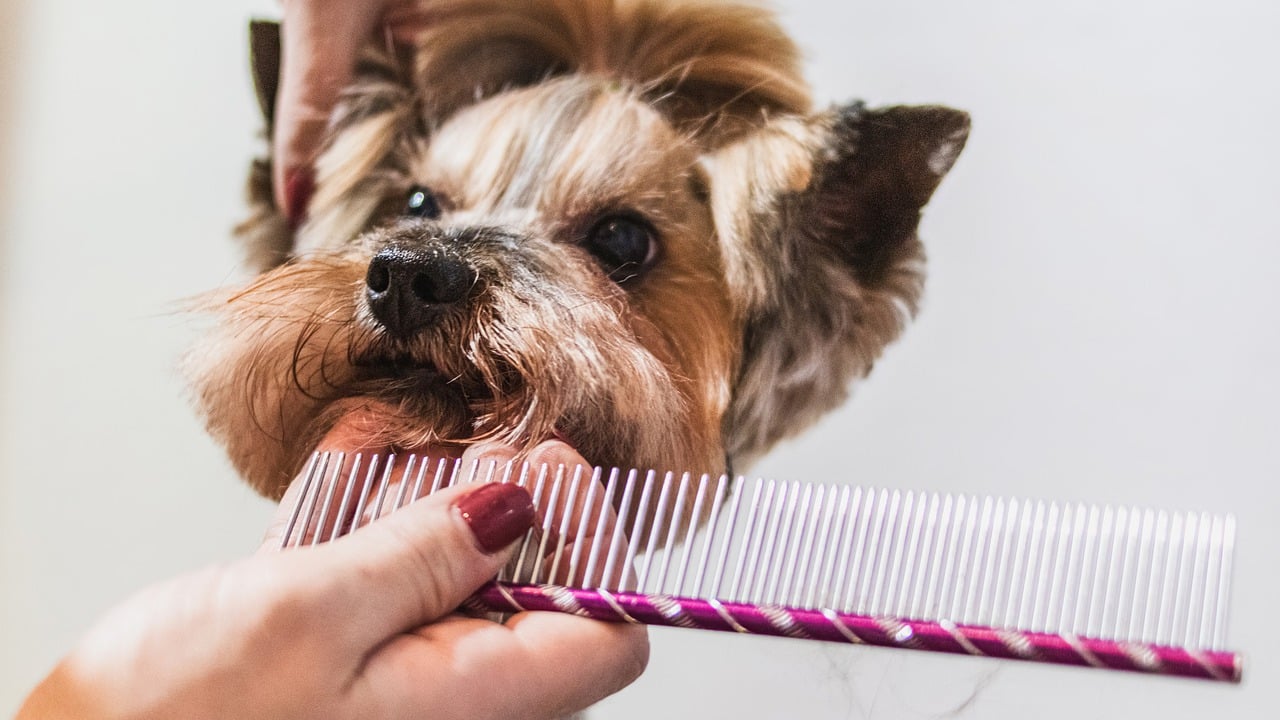
Understanding Your Pet's Needs
Every pet is unique, just like us! They come with their own quirks, personalities, and yes, grooming requirements. Understanding your pet's specific needs is the first step in making the grooming experience enjoyable for both of you. Just think of it as getting to know a new friend; the more you understand them, the better your time together will be!
First, consider your pet's breed. Different breeds have different grooming requirements. For instance, a Golden Retriever has a thick double coat that needs regular brushing to prevent matting, while a Shih Tzu may require more frequent trims to keep their long hair manageable. It's essential to research your pet's breed standards and grooming needs. This knowledge can help you choose the right grooming schedule and tools tailored to your furry friend.
Next, think about your pet's age and health. Puppies and kittens often have different grooming needs compared to adult pets. Young pets might be more playful and less cooperative during grooming, while older pets may have sensitive skin or mobility issues that require special consideration. Regular vet check-ups can help you stay informed about your pet's health, which in turn can affect how you approach grooming.
Another crucial factor is your pet's temperament. Some pets are naturally more anxious or skittish, while others may be laid-back and easy-going. If your pet tends to get nervous, it’s important to create a gentle approach to grooming. Using calming techniques, such as soft talking or gentle petting, can help ease their anxiety. In some cases, you might even want to consider using pet-safe calming sprays or treats designed to reduce stress during grooming sessions.
Lastly, pay attention to your pet's reactions. Are they squirming or trying to escape? Or are they relaxed and enjoying the attention? These signals are vital in understanding how your pet feels about grooming. If you notice signs of discomfort, it’s essential to adjust your approach. This could mean taking more breaks, using different tools, or even shortening the grooming session to make it more manageable for your pet.
In summary, understanding your pet's needs is all about observation and adaptation. By considering their breed, age, health, temperament, and reactions, you can create a grooming routine that is not only effective but also enjoyable for your furry friend. Remember, a happy pet makes for a happy owner!
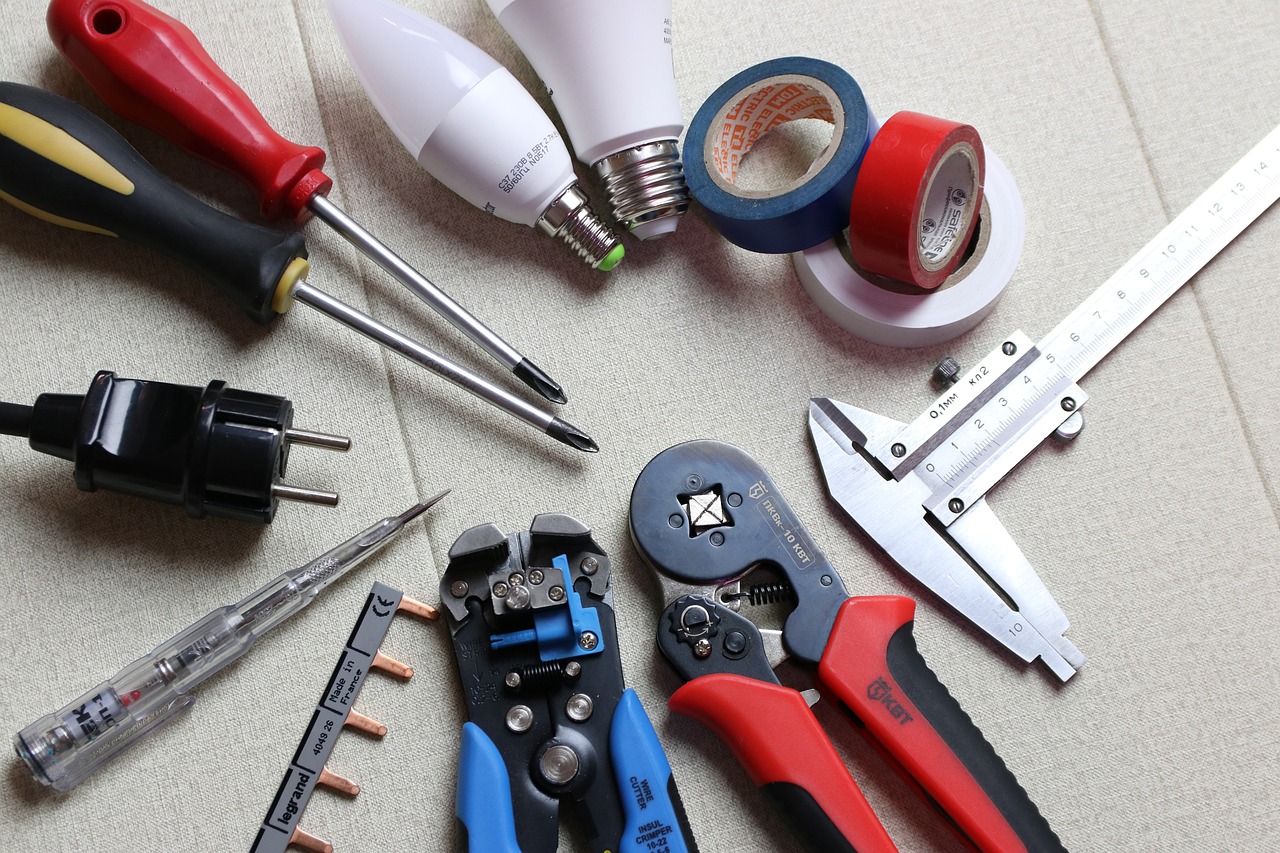
Choosing the Right Tools
When it comes to grooming your pet, choosing the right tools is absolutely essential. Imagine trying to paint a masterpiece with a broken brush; that’s how your pet feels when you use the wrong grooming equipment. The right tools not only enhance the grooming experience but also ensure the comfort and safety of your furry friend. So, what should you consider when selecting grooming tools? Let’s break it down.
First and foremost, consider your pet's coat type. Different breeds have different grooming needs, and using the appropriate tools can make a world of difference. For instance, if you have a long-haired breed like a Yorkshire Terrier or a Persian cat, you’ll want a slicker brush to help remove tangles and mats. On the other hand, short-haired breeds like Beagles or Bull Terriers may benefit from a rubber grooming mitt that helps remove loose hair while providing a gentle massage.
Additionally, the grooming tools you choose should be comfortable for you to use. A brush with an ergonomic handle can prevent hand fatigue during longer grooming sessions. Similarly, clippers should be lightweight and easy to maneuver. Think of it this way: if you’re uncomfortable, your pet can sense that stress, which could lead to a negative grooming experience.
Here’s a quick overview of some essential grooming tools you might need:
| Tool | Purpose |
|---|---|
| Slicker Brush | Removes tangles and mats, especially in long-haired breeds |
| Rubber Grooming Mitt | Gently removes loose hair and massages the skin |
| Clippers | For trimming and cutting fur |
| Flea Comb | Helps detect and remove fleas and their eggs |
| Nail Clippers | For keeping your pet's nails at a comfortable length |
Moreover, don’t overlook the importance of choosing the right shampoo. A good shampoo can keep your pet’s coat healthy and shiny. Look for products that are specifically designed for pets, as human shampoos can be too harsh for their sensitive skin. If your pet has any specific skin conditions or allergies, consult your veterinarian for recommendations on the best grooming products.
In conclusion, selecting the right grooming tools is a crucial step in creating a positive grooming experience for your pet. By understanding your pet's unique needs and investing in quality tools, you’ll not only make the grooming process smoother but also strengthen the bond you share with your furry companion. Remember, a happy pet means a happy grooming session!
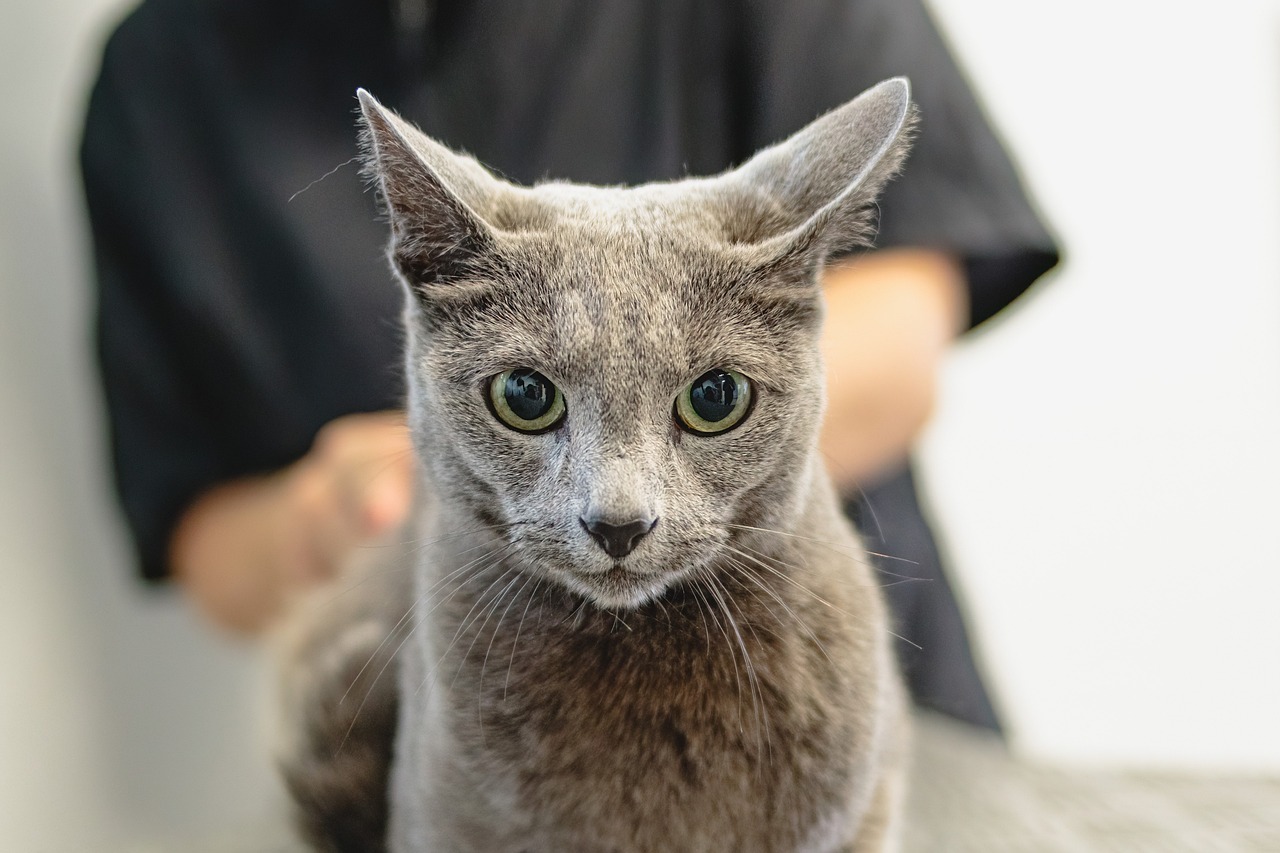
Creating a Calm Environment
Creating a calm environment for your pet during grooming is essential for a positive experience. Imagine this: you’re about to get a haircut, but the place is loud, chaotic, and smells funny. Not exactly comforting, right? Your furry friend feels the same way! A serene space can make all the difference in how your pet reacts to grooming. So, let’s dive into some effective strategies to set the perfect scene.
First off, choose a quiet area in your home that’s free from distractions. This means no loud music, no barking dogs in the background, and definitely no kids running around. You want your pet to feel safe and relaxed. If possible, use a room with natural light; it can create a soothing atmosphere. Think of it as setting the stage for a calming spa day!
Next, consider the temperature of the room. Just like humans, pets can get uncomfortable if it's too hot or too cold. Make sure the space is well-ventilated and at a comfortable temperature. If you’re grooming a long-haired breed, it’s especially important to keep them cool. You wouldn’t want to sweat through a haircut, would you?
Another key element is the grooming surface. Whether you’re using a table or the floor, ensure it’s a non-slip surface. This helps your pet feel secure and prevents any accidental slips that could cause stress or injury. You might even want to lay down a soft mat or blanket for extra comfort. Think of it as their personal grooming throne!
To further enhance the calming environment, consider using some gentle background sounds. Soft music or white noise can mask any sudden sounds that might startle your pet. Just like how some people find a quiet coffee shop more relaxing than a bustling café, your pet will appreciate the soothing sounds while they’re being groomed.
Lastly, don’t forget to have all your grooming tools ready before you start. This minimizes the time spent rummaging around, which can disrupt the calm vibe you’ve created. Having everything at hand not only makes the process smoother but also reassures your pet that they’re in safe hands. Remember, a little preparation can go a long way in creating that tranquil grooming experience!
In summary, creating a calm environment is all about paying attention to the details that make your pet feel secure and relaxed. By choosing the right space, controlling the temperature, ensuring a safe grooming surface, and introducing soothing sounds, you can transform grooming from a stressful chore into a delightful bonding experience. Your pet will thank you for it!
- How can I tell if my pet is stressed during grooming? Look for signs like panting, whining, or trying to escape. If you notice these behaviors, take a break and comfort your pet.
- What if my pet doesn't like being groomed? Start slowly and use positive reinforcement techniques. Gradually introduce grooming tools and make it a fun experience.
- Can I groom my pet outside? Yes, if the weather is nice! Just ensure the area is quiet and free from distractions.
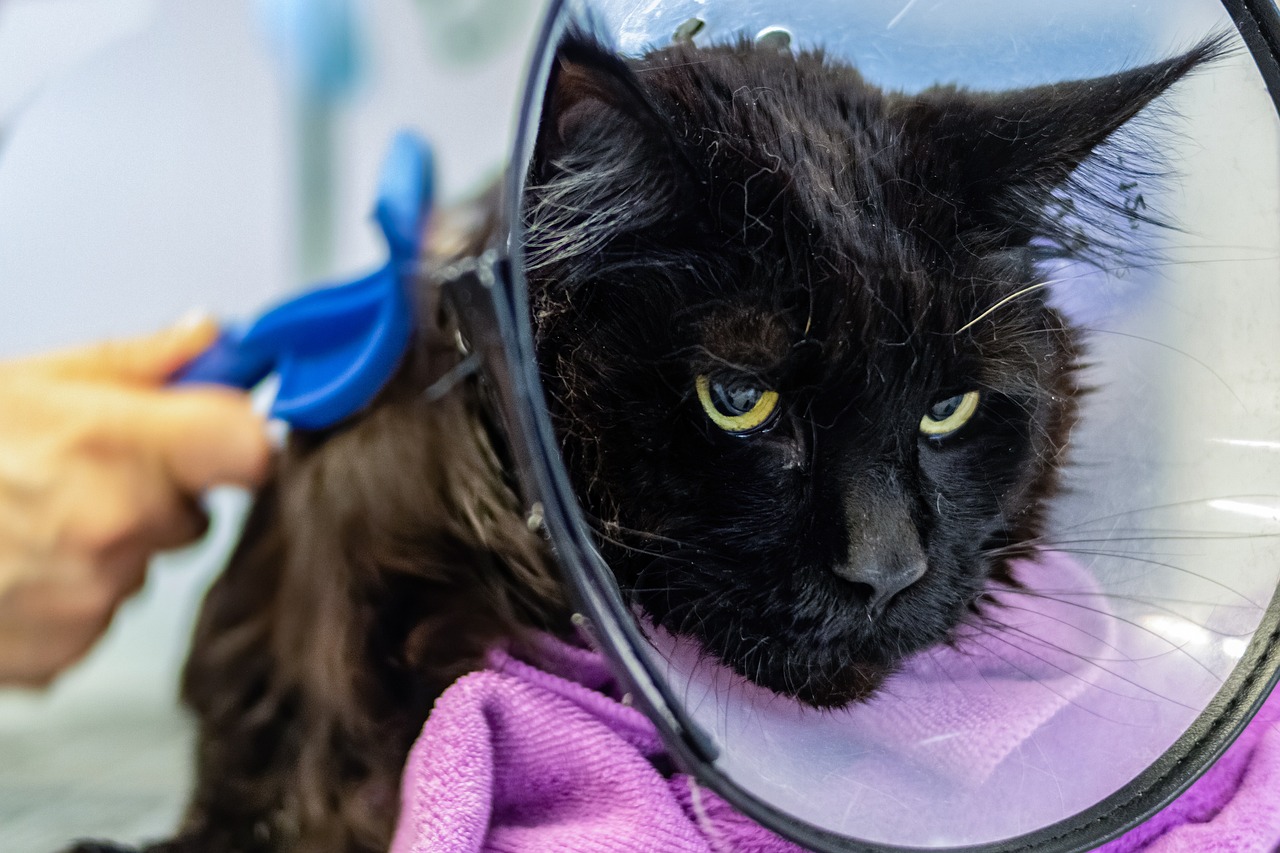
Establishing a Routine
Establishing a grooming routine for your pet is not just a good idea; it's an essential part of their overall well-being. Just like humans, pets thrive on consistency and predictability. Imagine how much easier life would be if you knew exactly when your next haircut or spa day was scheduled! By setting a regular grooming schedule, you can help your furry friend feel more comfortable and less anxious during grooming sessions. Think of it as creating a grooming calendar that both you and your pet can look forward to.
So, how do you establish this routine? First, consider your pet's specific needs. Different breeds have different grooming requirements, so it's crucial to tailor your schedule accordingly. For instance, long-haired breeds may require more frequent brushing to prevent matting, while short-haired breeds might need less frequent grooming but still benefit from regular baths. A good rule of thumb is to aim for a grooming session at least once a month, but some pets may require weekly or bi-weekly appointments.
Next, choose a time that works best for both you and your pet. Are you a morning person? Maybe a weekend afternoon? The goal is to find a time when both of you are relaxed and not rushed. During these sessions, make sure to keep the atmosphere calm and positive. You could play some soft music or have a favorite toy nearby to help your pet feel at ease. Remember, this is not just a chore; it’s a bonding moment!
To help your pet get used to the routine, start slowly. You might begin with just a few minutes of brushing or handling their paws, gradually increasing the duration as they become more comfortable. Positive reinforcement is key here; rewarding your pet with treats or praise can create a strong association between grooming and good experiences. This way, your pet will not only tolerate grooming but may even come to enjoy it!
Another important aspect of establishing a routine is to keep track of what works and what doesn’t. You might want to create a simple table to document your grooming sessions, noting your pet's behavior, any stress signals, and what techniques or tools were effective. Here’s a quick example:
| Date | Duration | Tools Used | Pet's Behavior |
|---|---|---|---|
| 01/01/2023 | 30 mins | Brush, Shampoo | Relaxed |
| 01/15/2023 | 45 mins | Clippers, Brush | Stressed |
By keeping this record, you can identify patterns and make necessary adjustments to your grooming routine, ensuring it remains a positive experience for your pet. Remember, the goal is to create a grooming routine that feels less like a chore and more like a delightful ritual. With time and patience, both you and your furry companion will look forward to these grooming sessions!
In conclusion, establishing a grooming routine is about more than just keeping your pet looking good; it's about building trust and enhancing your bond. So grab those brushes and clippers, and let’s make grooming a fun and rewarding experience for both you and your pet!

Positive Reinforcement Techniques
When it comes to grooming your pet, using can transform what might be a stressful experience into a delightful one. Imagine this: every time you pick up a brush or a pair of clippers, your furry friend wags their tail in anticipation instead of cowering in fear. Sounds like a dream, right? Well, it’s absolutely achievable! The key lies in creating a positive association with grooming through rewards and praise.
First and foremost, it’s essential to understand that pets, much like humans, respond well to encouragement. When your pet behaves well during grooming, shower them with affection. This could be in the form of gentle petting, soothing words, or even a favorite toy. For instance, if your dog sits quietly while you brush them, don’t hesitate to say, “Good boy!” in a cheerful tone. This type of verbal praise can work wonders in building their confidence.
Another effective strategy is to incorporate treats into the grooming process. Consider keeping a stash of your pet’s favorite snacks nearby. When they remain calm or allow you to groom them without fussing, reward them with a treat! This not only reinforces good behavior but also creates a positive experience linked to grooming. You might find that your pet starts to look forward to grooming sessions, eagerly anticipating the treats that come with it.
To give you a clearer picture, let’s break down some examples of positive reinforcement techniques:
| Technique | Description |
|---|---|
| Verbal Praise | Use a cheerful tone to praise your pet when they behave well during grooming. |
| Treat Rewards | Offer small treats as rewards for calm behavior, helping them associate grooming with something enjoyable. |
| Playtime | After grooming, engage in a fun activity or play session to reinforce that grooming leads to positive outcomes. |
It’s also important to keep in mind that consistency is crucial. If you only reward your pet occasionally, they might become confused about what behavior is being reinforced. Make it a point to reward them every time they exhibit good behavior during grooming. This consistency helps them learn and understand that grooming is a positive experience.
Additionally, keep an eye on your pet’s body language. If they seem anxious or uncomfortable, it’s okay to take a step back. You can try a shorter grooming session or pause to give them some love and reassurance. This not only shows your pet that you care but also reinforces the idea that grooming doesn’t have to be a stressful ordeal.
In summary, by utilizing , you’re not just grooming your pet; you’re building a trusting relationship. When your furry friend associates grooming with treats, praise, and affection, they are more likely to cooperate and even enjoy the process. So grab those brushes and treats, and get ready to transform grooming time into a bonding experience that both you and your pet will cherish!
- What are some good treats to use for positive reinforcement? Small, soft treats that your pet loves are ideal. Make sure they are easy to chew and digest.
- How often should I groom my pet? It depends on the breed and coat type. Regular grooming is recommended, but consult your vet for specific needs.
- What if my pet doesn’t respond to treats? Some pets may prefer praise or playtime instead. Experiment to find what motivates your pet the most.
- Can I use positive reinforcement for other training? Absolutely! Positive reinforcement works well for various training tasks, not just grooming.

Recognizing Signs of Stress
Every pet is unique, and just like us, they can experience stress in various forms. As a pet owner, it's crucial to be vigilant and recognize the signs of stress in your furry friend, especially during grooming sessions. Stress can manifest in several ways, and understanding these signs can help you create a more positive grooming experience.
Some common signs that your pet may be feeling stressed include:
- Excessive panting: If your pet is panting heavily, it might be a signal that they are uncomfortable or anxious.
- Trembling or shaking: Just like humans, pets can shake when they are scared or stressed. If you notice this behavior, it's essential to take a step back.
- Hiding or trying to escape: If your pet is trying to hide or escape from the grooming area, it’s a clear indication that they are not feeling safe.
- Growling or snapping: Any vocalizations or aggressive behavior should not be ignored. These are strong indicators that your pet is feeling threatened.
- Excessive licking or chewing: Some pets cope with stress by licking or chewing on themselves. If you notice this behavior, it may be time to reassess the grooming process.
It's important to remember that these signs can vary among different pets. For instance, while a dog might show stress through barking or growling, a cat may simply retreat to a corner. Observing your pet's body language is key. A relaxed pet will have a soft body posture, while a stressed pet may exhibit tense muscles or a lowered head.
When you notice these signs, it’s essential to take action. Here are some strategies to help alleviate your pet's stress:
- Take breaks: If you sense that your pet is getting overwhelmed, pause the grooming session. Allow them some time to relax before continuing.
- Use calming products: Consider using calming sprays or diffusers that can help soothe your pet during grooming.
- Adjust your technique: If your pet is anxious about a specific tool, try using a different one or approach that area more gently.
By being attentive and responsive to your pet's stress signals, you can significantly improve their grooming experience. Remember, grooming should be a bonding time between you and your pet, not a source of anxiety. Regularly checking in with your furry friend and adjusting your approach based on their comfort level can lead to a more enjoyable experience for both of you.
Q: What are the signs that my pet is stressed during grooming?
A: Look for signs such as excessive panting, trembling, hiding, growling, or excessive licking. Each pet may show stress differently, so be observant.
Q: How can I help my pet feel more comfortable during grooming?
A: Create a calm environment, take breaks, use calming products, and adjust your grooming techniques based on your pet's reactions.
Q: Should I consult a professional groomer if my pet shows signs of stress?
A: If your pet consistently shows stress during grooming, it may be beneficial to consult a professional groomer who can provide specialized care and techniques.
Q: Are there specific breeds that are more prone to stress during grooming?
A: Yes, some breeds may have more sensitive temperaments. It's essential to understand your pet's breed characteristics and tailor your grooming approach accordingly.

Grooming for Different Breeds
When it comes to grooming, one size does not fit all! Just like humans have different hair types and skin sensitivities, pets also come in a variety of breeds, each with their own unique grooming requirements. Understanding these differences is crucial for a successful grooming experience. For instance, a Golden Retriever has a thick, water-repellent coat that requires regular brushing to prevent matting and reduce shedding. On the other hand, a Shih Tzu has a long, flowing coat that can become tangled if not groomed frequently. This means that the frequency and technique of grooming will vary significantly depending on your pet's breed.
Let’s break it down a bit further. Some breeds, like the Yorkshire Terrier, may require daily brushing to keep their silky fur in top shape, while others, like the Beagle, might only need a good brush once a week. This is not just about aesthetics; regular grooming can help catch skin issues or parasites early on, keeping your furry friend healthy. Additionally, certain breeds have specific grooming tools that work best for them. For example:
| Breed | Grooming Frequency | Recommended Tools |
|---|---|---|
| Golden Retriever | Every 2-3 weeks | Deshedding brush, slicker brush |
| Shih Tzu | Every week | Pin brush, comb |
| Yorkshire Terrier | Daily | Wide-toothed comb, slicker brush |
| Beagle | Once a week | Short bristle brush |
Furthermore, some breeds have unique grooming needs that go beyond just brushing. For instance, poodles require regular trimming to maintain their distinctive look, while bulldogs need their facial folds cleaned to prevent infections. It’s essential to not only know your pet's grooming needs but also to adapt your approach as they age. Older pets may require gentler handling and more frequent breaks during grooming sessions.
In conclusion, understanding the specific grooming needs of your pet’s breed will not only enhance their appearance but also contribute significantly to their overall well-being. It’s all about creating a tailored grooming experience that respects their unique characteristics. So, whether you’re dealing with a fluffy Newfoundland or a sleek Chihuahua, be sure to do your homework and equip yourself with the right tools and techniques!
- How often should I groom my pet? - It depends on the breed. Long-haired breeds may need daily grooming, while short-haired breeds may only need it weekly.
- What tools do I need for grooming? - Basic tools include brushes, combs, and clippers. Specific breeds may require additional tools.
- Can I groom my pet at home? - Yes, many pet owners groom their pets at home, but consider professional help for complex grooming needs.
- How can I make grooming less stressful for my pet? - Create a calm environment, use positive reinforcement, and establish a routine.
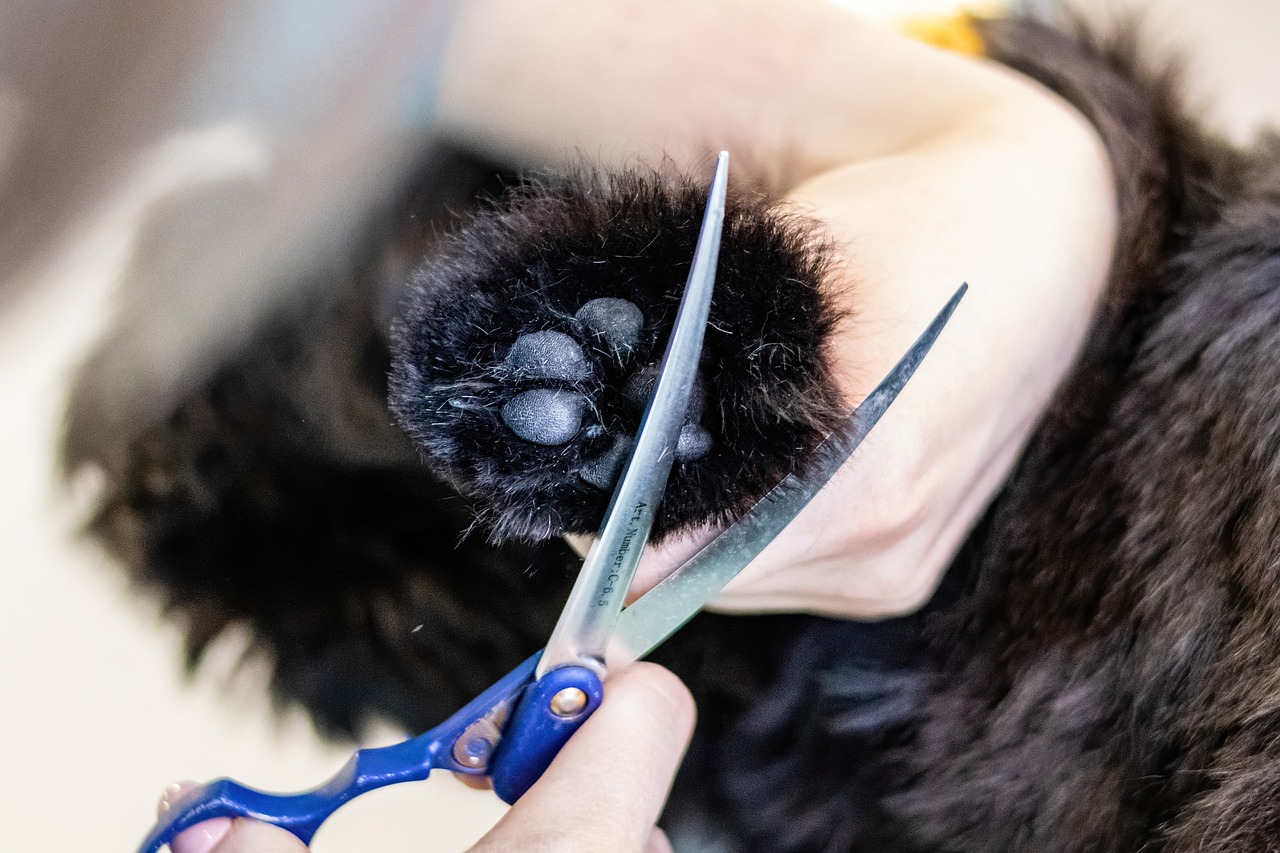
When to Seek Professional Help
Grooming your pet can be a fun and rewarding experience, but there are times when it’s best to call in the professionals. It’s crucial to recognize when your furry friend might need a bit more expertise than you can provide. For instance, if your pet has a particularly challenging coat type, such as a double coat or curly fur, you might find that a professional groomer can manage these textures much better than you can at home. They have the right tools and techniques that can prevent matting and keep your pet looking sharp.
Additionally, if your pet exhibits signs of anxiety or aggression during grooming sessions, it may be wise to consult a professional. Groomers are trained to handle all types of pets, including those that are a bit more skittish or temperamental. They can often complete the grooming process more quickly and efficiently, minimizing stress for both you and your pet. It’s important to remember that your pet’s emotional well-being is just as important as their physical appearance.
Another scenario where professional help is beneficial is when your pet has health issues that require special care. Conditions such as skin allergies, infections, or injuries can complicate the grooming process. In such cases, a professional groomer can work alongside your veterinarian to ensure your pet receives the appropriate care while being groomed. This collaboration can lead to a safer and more comfortable grooming experience.
Here are some signs that it might be time to seek professional help:
- Your pet has a thick or matted coat that you cannot manage at home.
- They become overly stressed or aggressive during grooming.
- Your pet has specific health issues that require specialized grooming techniques.
- You are unsure about how to handle certain grooming tasks, like nail trimming or ear cleaning.
In conclusion, while grooming at home can be a delightful bonding experience, recognizing when to seek professional help is key to ensuring your pet’s grooming is both safe and effective. By being attentive to your pet's needs and behaviors, you can make informed decisions that contribute to their overall well-being.
Q: How often should I take my pet to a professional groomer?
A: It depends on the breed and coat type. Generally, dogs with longer hair may need grooming every 4-6 weeks, while short-haired breeds can often go longer between visits.
Q: Can I groom my pet at home?
A: Absolutely! Many pet owners groom their pets at home. However, be aware of your pet's specific needs and know when to seek professional help.
Q: What should I look for in a professional groomer?
A: Look for a groomer with experience, good reviews, and a calm demeanor. It's also beneficial if they have experience with your pet's breed.
Q: How can I prepare my pet for a grooming session?
A: Start by making grooming a positive experience at home. Use treats and praise, and gradually introduce them to the tools and processes involved.
Q: What if my pet doesn’t like being groomed?
A: If your pet shows signs of stress, consider working with a professional groomer who can help ease their anxiety and make the experience more enjoyable.
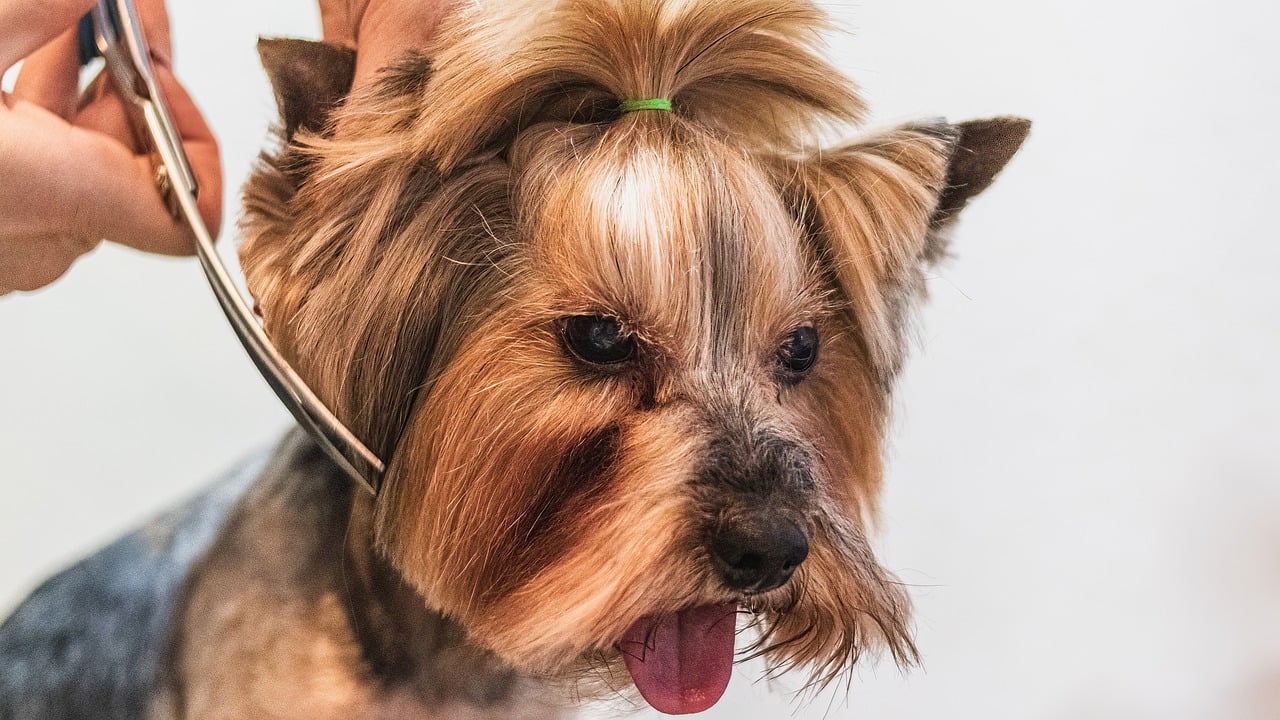
Maintaining Grooming Between Sessions
Maintaining your pet's grooming between professional sessions is crucial for their overall well-being and comfort. Just like humans, pets require regular attention to their coat, nails, and skin to keep them looking and feeling their best. Imagine your pet as a canvas; without regular touch-ups, that canvas can become dull and unkempt. So, how do you keep your furry friend looking fabulous in between those grooming appointments?
First and foremost, brushing is your best friend. Depending on your pet's coat type, you should establish a brushing routine that can help prevent mats and tangles. For example, long-haired breeds may need daily brushing, while short-haired pets might only require a weekly session. Regular brushing not only keeps their coat healthy but also helps to reduce shedding around your home. Just think of it as a mini spa session for your pet, where they can enjoy the soothing strokes while you bond with them.
Next up, we have nail trimming. It's an essential part of grooming that many pet owners overlook. Long nails can be uncomfortable for your pet and may even lead to painful walking issues. Aim to check and trim your pet's nails every two to four weeks. If you're unsure about how to do this, consider watching some tutorials or asking your vet for guidance. Remember, a well-groomed pet is a happy pet!
Another important aspect is ear cleaning. Pets can accumulate dirt and wax in their ears, leading to infections if not addressed. Make it a habit to inspect your pet's ears regularly and clean them as needed. Use a vet-recommended ear cleaner and cotton balls, and be gentle to ensure a positive experience. Just like you wouldn’t want to walk around with dirty ears, your pet deserves the same care!
Finally, consider incorporating skin care into your grooming routine. This can include using pet-friendly wipes to clean sensitive areas or applying moisturizing sprays if your pet has dry skin. Keeping your pet's skin healthy can prevent issues like itching or irritation, making them more comfortable and content.
| Grooming Task | Frequency | Tools Needed |
|---|---|---|
| Brushing | Daily (long-haired) / Weekly (short-haired) | Brush, comb |
| Nail Trimming | Every 2-4 weeks | Nail clippers, file |
| Ear Cleaning | As needed | Ear cleaner, cotton balls |
| Skin Care | As needed | Pet wipes, moisturizing sprays |
By incorporating these simple tasks into your routine, you can significantly enhance your pet's grooming experience. Remember, consistency is key! The more you engage in these activities, the more comfortable your pet will become with the entire grooming process. It’s like building a bridge of trust between you and your furry friend, ensuring that they feel safe and loved every step of the way.
- How often should I brush my pet? It depends on the breed; long-haired pets typically need daily brushing, while short-haired breeds may only need it weekly.
- What tools do I need for grooming? Basic tools include a brush, nail clippers, ear cleaner, and pet-friendly wipes.
- How can I make nail trimming easier? Start slow, use treats for positive reinforcement, and consider getting a vet or groomer to show you the ropes.
- When should I seek professional help? If your pet is anxious, has severe matting, or if you're unsure about grooming techniques, it’s best to consult a professional groomer.
Frequently Asked Questions
- What are the basic grooming needs for my pet?
Every pet has unique grooming needs based on their breed, coat type, and health. Generally, pets require regular brushing, bathing, nail trimming, and ear cleaning. Understanding your pet's specific requirements will help you tailor the grooming process to keep them comfortable and happy.
- How do I choose the right grooming tools?
Selecting the right grooming tools is crucial for a positive experience. Look for brushes that match your pet's coat type, clippers that are quiet and easy to handle, and shampoos that are gentle on their skin. Investing in high-quality tools can make grooming easier and more enjoyable for both you and your pet.
- How can I create a calm environment for grooming?
To create a serene grooming environment, minimize distractions by turning off loud music or the TV. Use a quiet space where your pet feels safe and secure. You can also play soft music or use calming scents to help your pet relax during grooming sessions.
- Why is establishing a grooming routine important?
Establishing a regular grooming routine helps your pet become accustomed to the process, reducing anxiety over time. Consistency builds trust between you and your pet, making grooming sessions smoother and more enjoyable.
- What is positive reinforcement in grooming?
Positive reinforcement involves using treats, praise, or affection to encourage good behavior during grooming. By rewarding your pet for staying calm and cooperative, you help them associate grooming with positive experiences, making them more willing to participate in the future.
- How can I recognize signs of stress in my pet?
Common signs of stress in pets include excessive panting, whining, hiding, or trying to escape. If you notice these behaviors, it’s important to take a break and reassess your grooming techniques. Adjusting your approach can help ensure a more positive experience for your furry friend.
- Are grooming needs different for various breeds?
Yes, grooming needs vary significantly among different breeds. Some dogs may require regular haircuts, while others might need minimal grooming. Researching your pet's breed will help you understand their specific grooming requirements and how to best care for their coat.
- When should I seek professional grooming help?
If your pet has specific grooming needs that you’re not comfortable handling, or if they have matted fur, skin issues, or anxiety during grooming, it may be time to consult a professional groomer. They have the expertise and tools to provide the best care for your pet.
- How can I maintain my pet's grooming between sessions?
Regular maintenance is key to keeping your pet comfortable between grooming sessions. Simple practices like brushing their coat, cleaning their ears, and checking their nails can make a big difference. These small efforts help prevent issues and keep your pet looking and feeling great.

